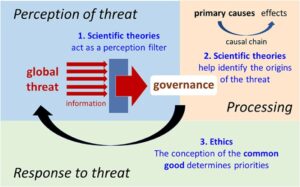
Competitive deck building is an art form that goes beyond merely selecting cards; it’s about crafting a strategic toolkit designed to outmaneuver opponents. In the world of card games, this practice plays a vital role as players strive to maximize their chances of victory through thoughtful card choice and synergy. Unlike casual deck building, where fun might take precedence, competitive deck building demands a keen understanding of strategy, adaptability, and the current game meta.
This involves carefully balancing various card types, exploring synergies, and dynamically adjusting strategies based on the competitive landscape. Whether you’re a seasoned player or just starting, the nuances of competitive deck building are essential for anyone looking to excel in the game.
Introduction to Competitive Deck Building
Competitive deck building is a critical aspect of card games that involves creating a deck designed to perform at the highest level in competitive settings. This process is not just about selecting powerful cards; it requires an understanding of game mechanics, strategies, and the current meta. Unlike casual deck building, where players can include any cards they enjoy or find interesting, competitive deck building focuses on optimizing performance against opponents.
Strategy plays a crucial role, as players must carefully consider how their deck will function against various strategies and card types.
Differences Between Competitive and Casual Deck Building
While both competitive and casual deck building share some common principles, they differ significantly in their objectives and approaches. The key distinctions include:
- Card Selection: Competitive decks prioritize cards that synergize well and offer the highest win rates, while casual decks often feature personal favorites regardless of synergy.
- Strategy Development: Competitive players develop sophisticated strategies aimed at countering popular decks in the meta, whereas casual players may focus on fun interactions.
- Adaptability: Competitive decks must be adaptable to various opponent strategies, requiring constant adjustments, while casual decks can remain static for prolonged periods.
Importance of Strategy in Competitive Deck Building

Strategy is the backbone of competitive deck building. Players need to understand not only their own deck’s strengths and weaknesses but also those of their opponents. This involves:
- Analyzing the current meta to identify popular cards and strategies.
- Crafting a game plan that maximizes the strengths of the deck while exploiting the weaknesses of opponents.
- Preparing for unexpected plays and ensuring a flexible strategy that can adapt during gameplay.
Key Components of a Competitive Deck
In competitive deck building, several essential components must be considered to enhance the performance of the deck. Understanding these components can make a significant difference in competitive play.
Essential Components of a Competitive Deck
A competitive deck is typically composed of the following key elements:
- Card Count: Most competitive decks contain a specific number of cards that ensure consistency and reliability.
- Mana Curve: Balancing the cost of cards to ensure a smooth and effective early, mid, and late game.
- Win Conditions: Strategies that define how to secure victory, ranging from overwhelming the opponent with aggressive creatures to controlling the board until a finishing blow can be delivered.
Role of Card Synergies
Card synergies significantly enhance the overall performance of a competitive deck. When cards work well together, they can produce powerful effects that exceed their individual strengths. Considerations include:
- Combining cards that can draw extra cards when specific conditions are met.
- Utilizing cards that enable powerful combos, allowing for devastating plays that can turn the tide of the game.
- Incorporating cards that support and enhance the primary strategy of the deck, ensuring consistency and reliability of those synergies.
Balancing Different Card Types
A well-rounded competitive deck must include a balance of different card types, such as creatures, spells, and artifacts. To achieve this balance, players should:
- Analyze the deck’s overall strategy and determine the right ratio of creatures to spells based on the desired playstyle.
- Include removal spells to handle threats and maintain control over the board.
- Incorporate utility cards that can serve multiple purposes to provide strategic versatility.
Strategies for Building a Competitive Deck
Building a competitive deck requires careful planning and strategic thinking. Different strategies can optimize the deck’s performance and ensure it stands up against various opponents.
Selecting Cards for a Competitive Deck
Choosing the right cards to include in a competitive deck involves a few straightforward strategies:
- Researching top-performing decks in the current meta to identify key cards that are essential for success.
- Prioritizing cards that provide value over time, rather than one-time effects, to maintain pressure on opponents.
- Experimenting with different combinations to discover unique synergies that can catch opponents off guard.
Importance of Meta Consideration
Understanding the current meta is vital for competitive deck building. Players should:
- Stay up-to-date with tournament results and deck lists to identify emerging strategies.
- Adjust their deck to counter the most common strategies encountered in competitive play.
- Consider card choices that provide flexibility against various matchups, allowing for a more robust overall strategy.
Adjusting Decks Based on Opponents

Adaptability is crucial in competitive gaming. Players should:
- Analyze opponent play styles and adjust their deck accordingly to exploit weaknesses.
- Incorporate sideboard cards that can be swapped in for specific matchups to enhance success rates.
- Practice against different decks to develop a better understanding of how to adjust strategies on the fly.
Analyzing Card Games for Competitive Play
To excel in competitive deck building, players must analyze various card games for their potential. This involves assessing the game’s mechanics, card pool, and community feedback.
Insights on Analyzing Card Games
When evaluating card games for competitive deck building, consider the following factors:
- Game mechanics that encourage strategic depth and interaction among players.
- Availability of a diverse card pool that allows for innovative deck construction.
- Support from organized play systems that facilitate competitive environments.
Role of Community Feedback and Meta-Analysis
Community insight plays a critical role in shaping competitive decks. Monitoring feedback includes:
- Participating in forums and discussions to learn about successful strategies and cards.
- Analyzing deck lists shared by top players to discover new trends.
- Engaging in constructive criticism to refine your own deck and strategies.
Choosing Card Games for Deck Building Strategies
Selecting the right card game can impact the effectiveness of competitive deck building strategies. Players should:
- Consider games with a strong competitive scene and consistent updates to the card pool.
- Evaluate personal preferences for mechanics and themes that enhance enjoyment during play.
- Research the availability of resources and support for competitive players within the chosen game.
Testing and Refining Your Competitive Deck
The process of playtesting is crucial for refining a competitive deck. Effective testing can lead to significant improvements in performance.
Methods for Playtesting a Competitive Deck
To effectively playtest a competitive deck, players can implement the following methods:
- Organizing mock tournaments with friends or local players to simulate competitive scenarios.
- Utilizing digital platforms for online playtesting to quickly adjust and iterate deck designs.
- Recording games to analyze decision-making processes and outcomes for future improvements.
Gathering Data from Playtesting Sessions
Collecting useful data from playtesting sessions is vital for refining a deck. Key practices include:
- Keeping track of win/loss ratios against various decks to identify strengths and weaknesses.
- Noting specific card interactions that performed well or poorly during matches.
- Adjusting the deck based on consistent patterns observed during testing to enhance performance.
Step-by-Step Procedure for Iterating Deck Designs
An organized approach to iterating deck designs can lead to continuous improvement:
- After each playtesting session, review performance data and identify areas for adjustment.
- Make incremental changes to the deck, such as swapping out underperforming cards for potential upgrades.
- Test the revised deck and repeat the evaluation process until the desired performance level is achieved.
Examples of Successful Competitive Decks
Learning from successful competitive decks can provide valuable insights into effective building strategies.
Renowned Competitive Decks from Various Card Games
Here are some examples of renowned competitive decks across various card games:
- Magic: The Gathering: The “Blue-White Control” decks have dominated tournaments by focusing on card advantage and board control.
- Hearthstone: The “Aggro Druid” deck became famous for its ability to overwhelm opponents quickly using efficient creatures.
- Yu-Gi-Oh: “Sky Striker” decks gained popularity due to their resource management and versatile strategies that adapt to many opponents.
Strategies Behind Successful Decks
The strategies that led to the success of these decks typically include:
- Utilizing a blend of aggression and control to keep opponents off balance.
- Incorporating cards that provide multiple uses, enhancing overall deck efficiency.
- Building around strong synergies that can lead to game-winning plays when executed correctly.
Insights for New Competitive Deck Builders
New competitive deck builders can draw inspiration from these successful decks by:
- Studying deck lists and gameplay footage to understand decision-making processes.
- Experimenting with similar strategies while adding personal touches to create unique decks.
- Engaging with the community to share insights and improve through collaborative learning.
The Evolution of Deck Building in Card Games
Deck building has evolved significantly over the years in various card games, influenced by player preferences, game mechanics, and community dynamics.
Historical Development of Deck Building Strategies
The development of deck building strategies in card games can be traced through several key phases:
- Initial phases focused on simple card interactions, where players would build decks based on straightforward combos.
- As card games matured, strategies became more complex, incorporating advanced mechanics and multi-card synergies.
- The introduction of online platforms has further accelerated evolution, with players sharing strategies and deck lists globally.
Comparing Deck Building in Different Genres
Different genres of card games exhibit unique deck building evolutions:
- Trading card games often emphasize resource management, leading to strategic depth and intricate deck designs.
- Living card games focus on narrative and thematic consistency, promoting unique deck-building experiences.
- Digital card games have streamlined deck building processes, with automated features enhancing accessibility for new players.
Impact of Technology on Deck Building Trends
Technology and online platforms have played a vital role in shaping deck building trends:
- Online resources and tools provide immediate access to deck-building software, streamlining the process for players.
- Social media and streaming platforms allow players to share strategies, leading to rapid dissemination of successful deck ideas.
- Developers can quickly balance cards and update metas based on community feedback, impacting how players build decks.
Resources for Aspiring Competitive Deck Builders
For those looking to delve into competitive deck building, numerous resources can aid the journey.
Books, Websites, and Online Communities
Aspiring competitive deck builders can benefit from the following resources:
- Books: Titles such as “The Art of Deck Building” provide insights into the strategic aspects of deck construction.
- Websites: Platforms like MTGGoldfish and HearthPwn offer deck lists, articles, and community discussions.
- Online Communities: Forums such as Reddit and Discord channels foster engagement and knowledge sharing among players.
Tools and Software for Deck Construction
Several tools can enhance the deck construction process:
- Deck building apps that allow users to construct and test decks digitally.
- Statistical analysis tools that track win rates and card performance over time.
- Simulation software that enables players to test matchups against a variety of decks.
Joining Tournaments for Competitive Experience
Participating in local or online tournaments can provide invaluable competitive experience. Recommendations include:
- Researching local game stores that host weekly tournaments to gain hands-on experience.
- Joining online tournaments through gaming platforms or competitive websites to practice against diverse opponents.
- Engaging with the tournament community to gather feedback and tips from experienced players.
Ending Remarks
In conclusion, the journey through competitive deck building is one filled with creativity, analysis, and continuous refinement. By understanding the key components, employing effective strategies, and analyzing successful decks, players can significantly improve their competitive edge. As the landscape of card games evolves, so too must our approaches to deck building, making it an exciting and ever-changing challenge.
Frequently Asked Questions
What is the main difference between competitive and casual deck building?
The main difference lies in the focus on strategy and optimization in competitive deck building, whereas casual deck building prioritizes fun and personal expression.
How do I select cards for a competitive deck?
Focus on synergy, balance between card types, and current meta trends to choose cards that will enhance your deck’s performance.
What does “meta consideration” mean in deck building?
Meta consideration refers to understanding the current trends, strategies, and popular decks in the competitive scene to inform your deck choices.
How often should I test and refine my competitive deck?
Regular testing and refinement are crucial; ideally, you should test your deck after making any significant changes or before participating in a tournament.
Where can I find resources to improve my deck building skills?
Resources such as books, online communities, and deck-building tools or software can provide invaluable assistance in honing your skills.





![[Card] Balancing Forces : r/collectivecg](https://biovac.info/wp-content/uploads/2025/07/p8aoiyni6ex21-300x300.jpg)